Mohs Surgery
Each Mid TN Skin Mohs surgeon is specially trained as a cancer surgeon, pathologist, and reconstructive surgeon and this results in Mohs surgery having the highest success rate of all skin cancer treatments – where cure rates approach 99 percent.
Examples of Mohs Surgery
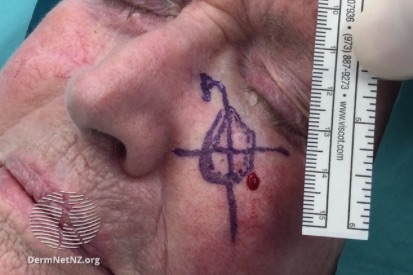
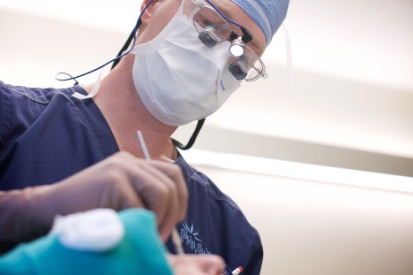
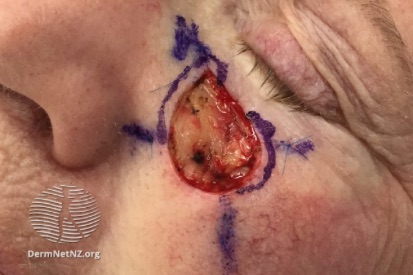
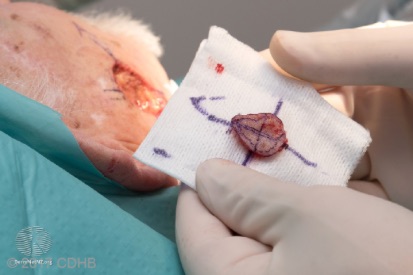
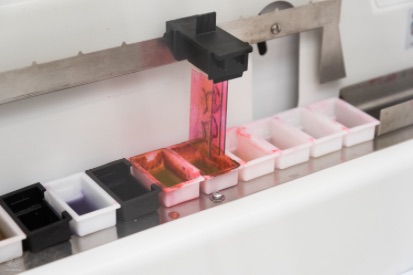

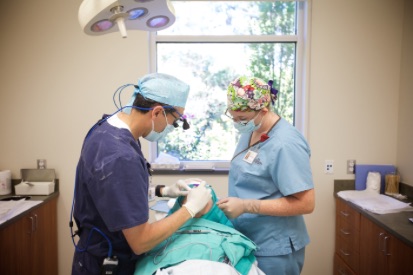
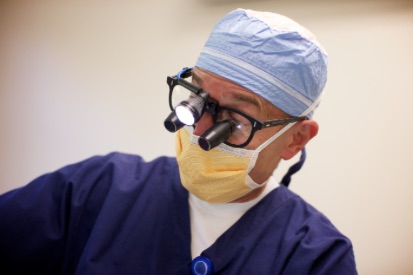
What is Mohs Surgery?
This technique allows dermatologists, trained in Mohs surgery, to see beyond the visible disease, and to precisely identify and remove the entire tumor, leaving healthy tissue unharmed.
This procedure is most often used in treating three of the most common forms of skin cancer: melanoma, basal cell carcinoma and squamous cell carcinoma.
What are the Benefits of Mohs?
How a Mid TN Skin Can Help?
At Mid TN Skin, our Mohs surgeons are board-certified and specialize exclusively in Mohs surgery and related dermatological procedures. This focused practice allows them to refine their skills and stay updated on the latest advancements in the field.
Our patient promise is dedicated to your care. Our Mohs surgeons undergo extensive training beyond medical school and residency to ensure you receive comprehensive skin cancer care.
Mohs Surgery FAQs
By using detailed mapping techniques and complete microscopic control, the Mohs surgeon can pinpoint areas involved with cancer that are otherwise invisible to the naked eye. Therefore, even the smallest microscopic roots of cancer can be removed. The result is:
- The removal of as little normal skin as possible,
- The highest possibility for curing the cancer.
No. Mohs surgery is performed in a pleasant outpatient surgical suite and you may return home the same day. Hospital facilities are available if necessary.
Your appointment will be scheduled early in the day. Our staff will escort you into a surgical suite where the surgeon will numb the area around the skin cancer. Once it is numb, the visible cancer and a thin layer of tissue will be removed. This tissue is carefully mapped and coded by the surgeon and taken to the adjacent laboratory where the technician will immediately process the microscope slides. You will have a temporary dressing placed over the wound and you will be free to return to the reception area.
The surgical procedure alone takes 10-15 minutes. However, it takes a minimum of 1 1/2 to 2 hours to prepare and microscopically examine the tissues of each layer. Several surgical stages and microscopic examinations may be required, and you will be asked to wait in the patient reception area between stages. Although there is no way to tell before surgery how many stages will be necessary, most cancers are removed in three stages or less.
We would like to make the time you spend with us as pleasant and comfortable as possible. You may want to bring reading material to occupy your time while waiting for the microscope slides to be processed and examined. You may want to bring a sweater, as the temperature in our office varies. Magazines and beverages will be available in the reception area. If your visit extends through the lunch hour, your companion may visit the hospital cafeteria and bring you a snack or lunch since you are asked not to leave the reception area of our office.
The most difficult part of the procedure is waiting for the results from the laboratory. Since we do not know in advance how much time is necessary to remove the cancer and repair the wound, we ask that you plan to be in the office the entire day and that you make no other commitments. Please be sure to inform your companion and/or driver of this.
Yes. Any form of treatment will leave a scar. However, because Mohs surgery removes as little normal tissue as possible, scarring is minimized. Immediately after the cancer is removed, we may choose (1) to leave the wound to heal itself, (2) to repair the wound with stitches, or (3) to reconstruct the wound with a skin graft or flap. This decision is based on the safest method that will provide the best cosmetic result.
Will I need to come back? Usually one return visit is all that is needed to examine the healed surgical site or to remove your surgical dressings. Afterwards, you may return to your referring physician for routine check-ups. Lifetime annual check ups are considered essential. After having one skin cancer, statistics show that you have a higher chance of developing a second skin cancer. You should have your skin checked by your physician at least once each year for four years, not only to examine the treated skin cancer, but also to check for new skin cancers.
The best protection from skin cancer is to avoid the harmful ultraviolet rays of the sun. Even if you tan easily, the sun can contribute to skin cancer in two ways. First, the sunlight damages the genes that control cell growth, and second, sunlight damages the body’s immune system so that early cancers grow unchecked by normal immune defense.
Minimize your exposure by:
- Using any sunscreen with a sun protective factor (SPF) of at least 30 and preferably with UVA/UVB protection when you spend any time in the sun.
- Avoid sun exposure during mid-day hours (10:00 am – 4:00 pm)
- Do not stay outdoors unprotected on cloudy days since the ultraviolet light penetrates easily through the clouds.
- If you follow this advice it may not be necessary to restrict your outdoor activities or change your lifestyle.
Watch: Mohs Surgery for Skin Cancer from Board-Certified Mohs Surgeon Dr. Paula Lapinski
What to Expect at Your During Your Mohs Procedure
Once the obvious tumor is removed, Mohs surgeons:
- remove an additional, thin layer of tissue from the tumor site.
- create a “map” or drawing of the removed tissue to be used as a guide to the precise location of any remaining cancer cells.
- microscopically examine the removed tissue thoroughly to check for evidence of remaining cancer cells.
- return to the specific area of the residual tumor indicated by the map
- remove another thin layer of tissue only from the specific area(s) where cancer cells were detected
- microscopically examine the newly removed tissue for additional cancer cells
How to Prepare for Mohs Surgery
These are general recommendations. We recommend working closely with your specific provider to plan and prepare for your Mohs surgery.
Planning for Recovery after Mohs Surgery
- Firstly, arrange for someone to drive you home after the procedure, as you may feel groggy from any anesthesia used.
- Plan to take it easy for a day or two, avoiding strenuous activities.
- And, follow your surgeon's post-operative care instructions diligently, which may include keeping the wound clean and dry.
After having one skin cancer, statistics show that you have a higher chance of developing a second skin cancer. You should have your skin checked by your referring dermatologist at least once a year for four years not only to examine the treated skin cancer but also to check for new skin cancers.
Featured Products for Sun Safety

EltaMD UV Luminous Broad-Spectrum SPF 41
Get a shade more luminous with our newest lightly tinted sunscreen that brings skin care and essential sun care together. EltaMD UV Luminous Broad-Spectrum SPF 41 uses antioxidants such as linoleic acid and vitamin E to protect your skin from free radicals and diminish UV-related signs of aging. It’s light rosy tint and semi-matte finish blends into the skin seamlessly and blurs imperfections. EltaMD UV Luminous Broad-Spectrum SPF 41 sunscreen is ideal for those seeking non-greasy UV protection with all physical active ingredients. Net wt 1.7 oz/48 g

SkinCeuticals Physical Fusion UV Defense SPF 50
Physical Fusion UV Defense SPF 50 is a tinted, fluid sunscreen that leaves a radiant, even finish. It offers broad spectrum UVA/UVB protection for all skin types, including sensitive, while boosting skin's natural defenses to environmental stress using artemia salina, a plankton extract. This sunscreen is water resistant for up to 40 minutes. 1.7 fl oz / 50 mL
